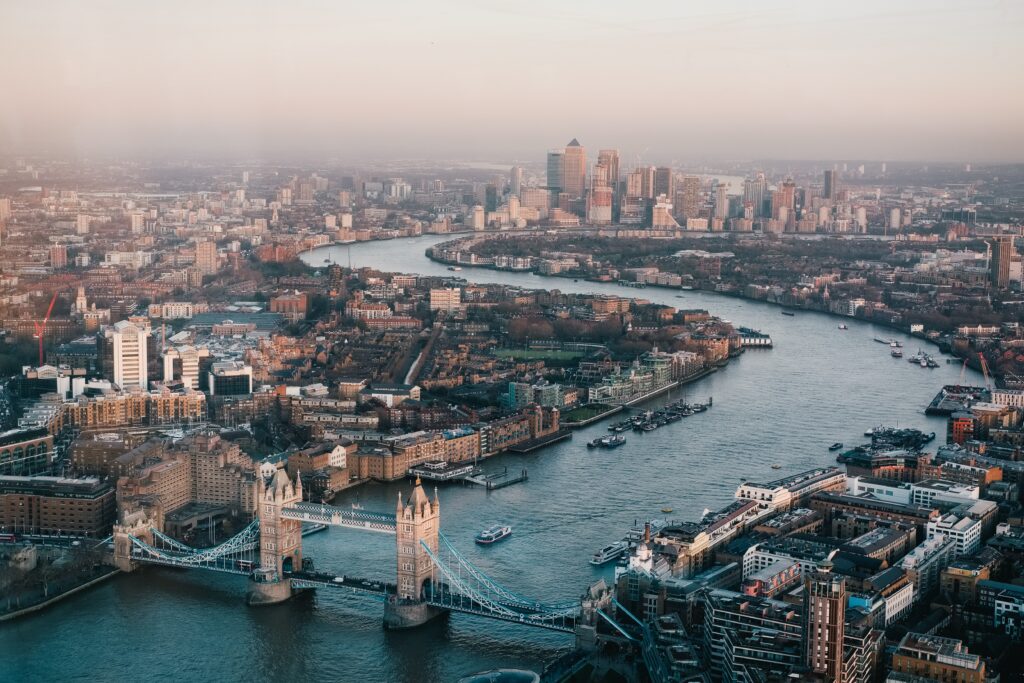British buildings span a diverse spectrum of architectural eras and trends. In the villages of the Cotswolds, for instance, the silvery limestone that is a regional trademark is used in the construction of both residential and commercial structures, with slate used for roofing. The area around Oxford was famed for its use of honey-colored stone, whereas the boundary between Oxfordshire and Northamptonshire to the north is home to an ironstone belt. Half-timber frames and thatched roofs are prevalent in the river valleys, while the warm red sandstone of southern England is crafted from the region’s rich clay.
Although many foreign styles have had an impact on England’s architecture, the resulting structures frequently retain a uniquely British character. Perpendicular style triumphs like King’s College Chapel at Cambridge transformed French Gothic architecture into a uniquely English style by using stone to make a framework for walls that were practically entirely glass. While Christopher Wren was alive, his buildings were ridiculed for being too traditional, yet now they are considered among England’s most impressive structures. He designed a large number of churches in London that borrowed ideas from the European Renaissance but nevertheless seem uniquely British. Nowadays, a vast majority of new English apartments have modern touches: from adorable home kitchen design to sophisticated living rooms.

Visual Arts: Sculpture
Barring the remnants of standing stone decoration and “transplanted” Roman art, England’s sculptural tradition is rooted in the Christian church. Monumental stone crosses, reminiscent of the Celtic crosses seen in Ireland, are the first examples of Christian sculpture in Anglo-Saxon England. Gothic cathedrals are known for their intricate stonework, and Wells is only one example of a cathedral with exceptional relief carving (c. 1225–40).
Painting
The English church did much to encourage artistic growth in the country. The illumination of gospel manuscripts changed between the seventh and fifteenth centuries, moving away from abstract embellishment based on Celtic patterns and toward more self-contained pictorial representation in accordance with the style popular throughout Europe at the period. New points of view and compositional strategies imported from Italy began appearing in English works in the 15th century. As printing became more accessible during this period, however, the labor-intensive method of illumination progressively fell out of usage. In the 1630s, a more global artistic current reached England’s borders when Charles I commissioned Flemish Baroque artists like Peter Paul Rubens and Anthony Van Dyck to work for his court. Even so, over the next 150 years, English artists remained fixated on local themes, particularly portraiture and landscape painting.
Instrumental music from the United Kingdom
The origins of British art music may be traced back to plainsong (plainchant). It was the monks and troubadours that went all across Europe and facilitated the quick exchange of musical forms. There were several great English composers in the 16th and 17th centuries, including William Byrd, John Dowland, Thomas Tallis, and Thomas Morley. Two giants of the Baroque era, Henry Purcell and George Frideric Handel, continue to be revered today. It wasn’t until the late nineteenth century, when composers like William Gilbert and Arthur Sullivan were at the pinnacle of their careers, that English music again achieved new heights.
